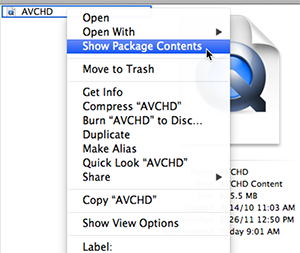
It will probably be fine, but If you have trouble try optimizing in FCPX. Therefore I would attempt to edit FCPX imported AVCHD and see how it goes with your project. Is AVCHD h264 malformed? I don’t know, but it seems to take a bit more processing power than the Canon DSLR h264 footage I edit with most of the time. Malformed h264 can give color shifts, bad performance or export errors in FCPX. For example, malformed h264 files are all over the place because h264 is a decoding standing not an encoding one - you can therefore can get widely different results from different compression methods. Probably not, but rewrapped AVCHD h264 might still not give you the performance your looking for in FCPX. So there is no need to EVERy goto ProRes for AVCHD?

Regardless if you do have a stray MTS file the best option is to spend a few dollars to save some headaches and purchase Clip Wrap, or Edit Ready, to rewrap them properly (even in just rewrapping ClipWrap will transcode the audio into beautifully efficient uncompressed). It might be the different flavors of MTS (still investigating this), or could be that audio is being passed through when making optimized and proxy. You can bring those into FCPX and optimized, but in my testing, creating optimized media of MTS files in FCPX, doesn’t work perfectly with every MTS file. It’s 8.06GB, so 2.5 GB larger because of transcoding it’s 6 channels of MTS/AAC audio to uncompressed. It is now as it should be a single 42 minute clip from the recorded lecture. If you dig in you’ll see your files sizes are slightly larger than what was on the camera card, but that is because of uncompressed audio.įigure 2: The AVCHD bundle that contained the above MTS files, but now imported via FCPX import. Using the Import window, FCPX will wrap them in a mov container and also transcode the audio intro straight PCM audio so it plays back as smooth as butter. If you are first copying a card to a drive, then make sure you get the entire folder structure of the card, or use something like excellent Hedge for this task. If your coming straight from the card, its easy. Fortunately FCPX will do all this transcoding automatically on import of AVCHD! Sweet, that is if you use the Import dialog. Therefore, you need both Audio and Video to be rewrapped and or transcoded from a MTS file, as well as injecting metadata – timecode for example. In MTS, Audio is as much as a problem as video. In FCPX it make LOOK like it is playing back a few files efficiently, but try to deal with more than a handful of shots and you will enter molasses land. Both audio and video are efficiently stored in there… but almost no NLE can play them back completely efficiently.

MTS are h264 (well at least in theory) as well as compressed audio. The elements in the AVCHD bundle is not designed to be separated - there is essential metadata in there, for example MTS files are NOT shots but rather elements of shots - if you have a long shot it will be divided into multiple MTS. Mpeg Transport Streams are part of the AVCHD bundle, and they belong in the bundle, not separate if you can help it.

If you ever find yourself with MTS files realize you probably shouldn’t have them. Bring them into FCPX and sure they play… sorta. But only a bit.** MTS files are enough to make a FCPX editor cower in the corner. So here they are in no particular order: MTS Files = Media Transcoded by Satan** So after good amount of sleuthing I discovered a few issues and tips. FCPX crashing, being as slow as molasses and not able to share (export). I have heard from colleagues of their trouble with AVCHD media, shot on the sony FS700 in particular.


 0 kommentar(er)
0 kommentar(er)
